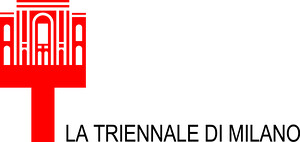Viale Alemagna, 6
20121 Milan
Italy
The XXII Triennale di Milano, Broken Nature: Design Takes on Human Survival announces the international participations which will accompany the thematic exhibition, curated by Paola Antonelli, Senior Curator of Architecture and Design and Director of R&D at The Museum of Modern Art alongside a dedicated curatorial team including Ala Tannir, Laura Maeran, and Azzurra Muzzonigro. Laura Agnesi and Marco Sammicheli have coordinated the call for international participations, solicited under the aegis of the Bureau International des Expositions through official governmental channels. The 27 installations hail from some of the world’s leading institutions and universities, as well as countries such as Senegal, Sri Lanka, Australia, and Cameroon, to name a few.
Broken Nature is an in-depth exploration of the strands that connect humans to the natural environment that have been intensely compromised, if not entirely severed, over the years. By casting a wide net on architecture and design projects, the exhibition will underline the concept of restorative design, highlighting objects and concepts at all scales that reconsider human beings’ relationship with their environments—including both natural and social ecosystems.
“A healthy concern for the future of our planet and of our species should come as no surprise, and yet the Broken Nature team feels thankful for the eager and consistent responses to the theme coming from all over the world,” says Antonelli. “The concept of restorative design that is at the core of the XXII Triennale di Milano and of the exhibition, in particular, resonates with strength and sensitivity throughout the international participations. It allows us to keep believing in the power of design to help citizens understand complexity, assess risks, adapt behaviors, and demand change.”
In addition to the international participants, a number of directly commissioned works will complement the loans in the thematic exhibition and will highlight design approaches aimed not only at correcting humanity’s self-destructive course, but also at replenishing our relationship with the environment and with all specie—including other human beings. These projects are often continuations of a body of work previously started and are meant to encourage designers to consider their practice as long-term research. Indeed, the XXII Triennale di Milano believes that design should be accorded as much respect and trust as science, especially when it comes to dealing with major revolutions that involve humans and their behaviors.
The commissions include:
Formafantasma
Ore Streams is an investigation into the recycling of precious electronic waste. Design duo Formafantasma have set out to identify ways in which design can be deployed to correct the flaws in the current waste-stream system. Beyond systemic improvements, design can be used to elicit a less conscious attitudinal shift towards considering waste not waste, but rather a new material. The project began during the NGV Triennial in Melbourne in 2017. The work is composed of in-depth analysis of the waste cycle and of a collection of office furniture constructed using dead-stock and recycled materials.
Neri Oxman & Mediated Matter Group, MIT Media Lab
Architect and designer Neri Oxman, a professor at the MIT Media Lab, founded and directs the university’s Mediated Matter research group, which explores how digital design and fabrication technologies can mediate between humans and environment to radically transform the design and construction of our surroundings. Their commission for the XXII Triennale di Milano will use melanin––the natural pigment whose concentration defines the color of human skin—at an architectural scale. Her work will be a demonstration of how design at all scales can be a powerful commentary, both poetic and rigorously scientific, on human bias and prejudice.
Sigil Collective
Sigil is a collective based in Beirut and New York City. Through a series of visual, representational and site-specific interventions, they seek to explore the simultaneously marvelous and terrifying metamorphoses of the Arab landscape marked by both historical and contemporary struggles. Their contribution to Broken Nature, entitled Birdsong, investigates the relationship and entanglements that exist between birds (or “avian bodies,” which can be real or fantastical), humans, and the Syrian landscape and history.
The XXII Triennale di Milano will comprise a selection of circa 120 design and architecture projects from the last three decades, examples and in some cases milestones of restorative design. Among the milestones, Broken Nature will include Pettie Petzerand Johan Jonker’s Hippo Roller, Elemental’s Quinta Monroy housing, Fernanda Viégas’ and Martin Wattenberg’s Wind Map interactive visualization, and Zach Lieberman et al.’s Eyewriter low-cost, open source eye-tracking system. These projects, which have played an essential role in the history and advancement of design, have in some cases had a memorable impact on society and in the way humans related to the world around them. This is the first time that these projects are all placed within the same conversation, and in fact the same space, with the aim to unearth design’s potential to mediate societal and behavioral changes.
Conceived by Antonelli as an exhibition that extends well beyond the walls of La Triennale building, Broken Nature also consists of:
–an online platform for dynamic discourse and to unveil the curatorial process;
–public programming and symposia;
–a catalog with essays from scientists, scholars, designers, and critics, as well as a section devoted to the national participations.
The XXII International Exhibition of La Triennale di Milano will open on March 1 and run until September 1, 2019. The online platform has been publishing updates regularly and will continue to do so throughout the course of the physical exhibition.


